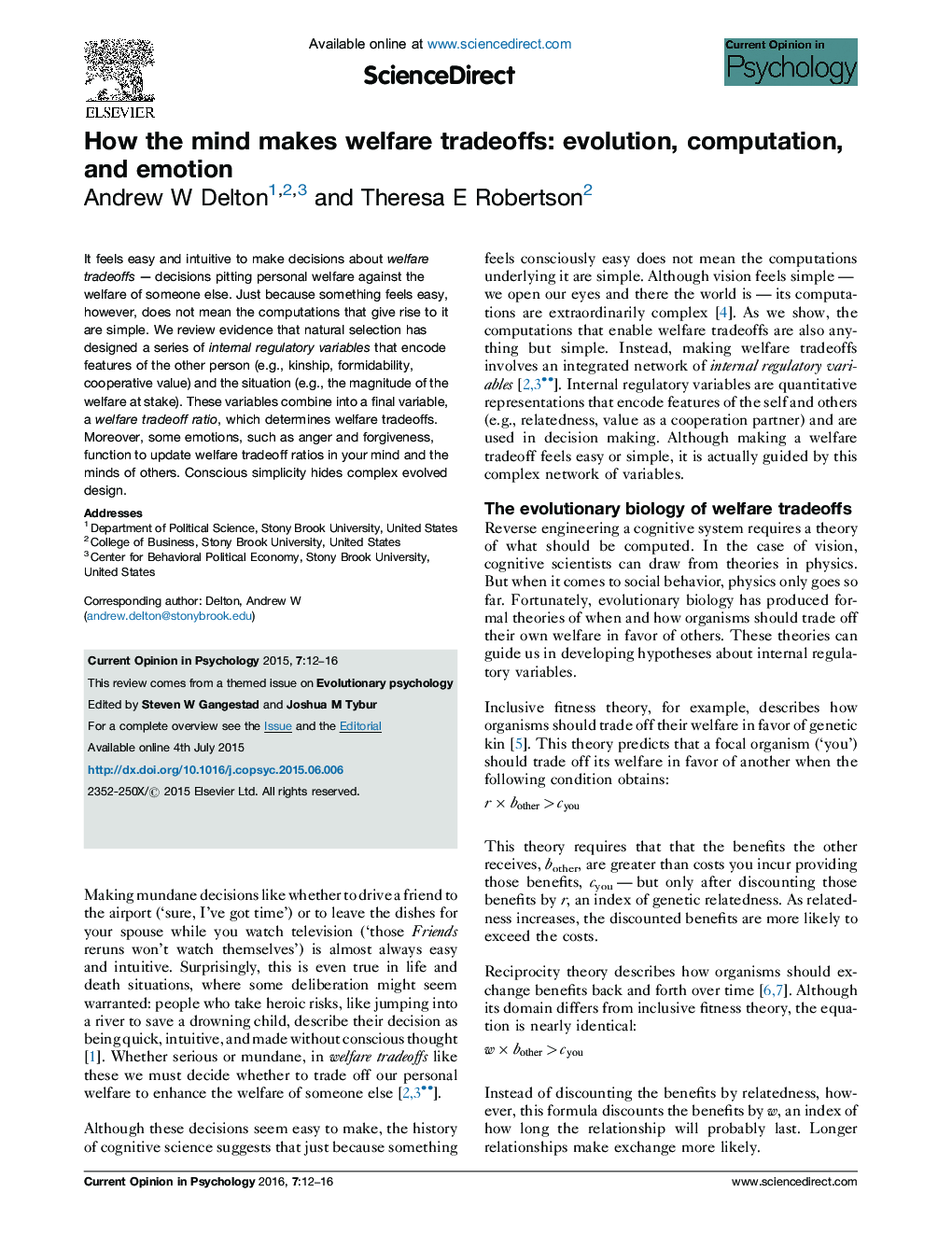| Article ID | Journal | Published Year | Pages | File Type |
|---|---|---|---|---|
| 879347 | Current Opinion in Psychology | 2016 | 5 Pages |
•Welfare tradeoffs involve sacrificing personal welfare to increase another's welfare.•Although making welfare tradeoffs feels easy, this hides complex computations.•Evolution has created a series of internal regulatory variables to make tradeoffs.•This includes a final summary variable, a welfare tradeoff ratio.•Welfare tradeoff ratios can be updated by emotions such as anger and forgiveness.
It feels easy and intuitive to make decisions about welfare tradeoffs — decisions pitting personal welfare against the welfare of someone else. Just because something feels easy, however, does not mean the computations that give rise to it are simple. We review evidence that natural selection has designed a series of internal regulatory variables that encode features of the other person (e.g., kinship, formidability, cooperative value) and the situation (e.g., the magnitude of the welfare at stake). These variables combine into a final variable, a welfare tradeoff ratio, which determines welfare tradeoffs. Moreover, some emotions, such as anger and forgiveness, function to update welfare tradeoff ratios in your mind and the minds of others. Conscious simplicity hides complex evolved design.
